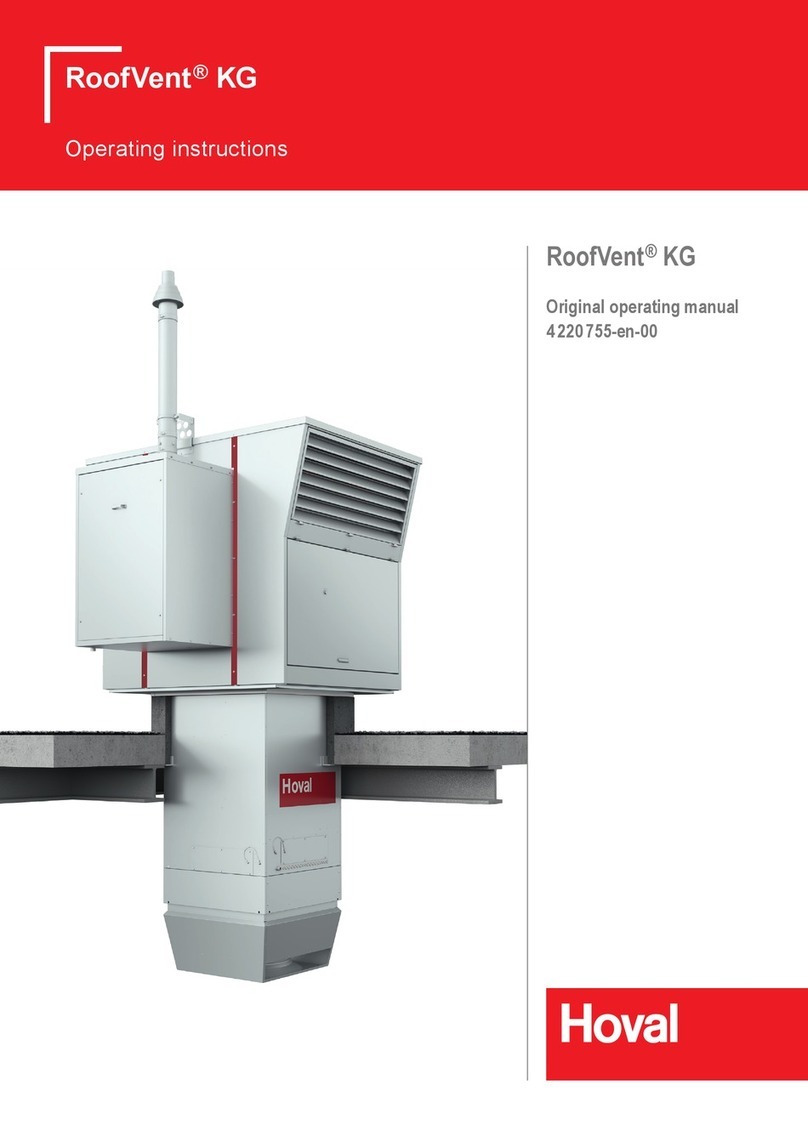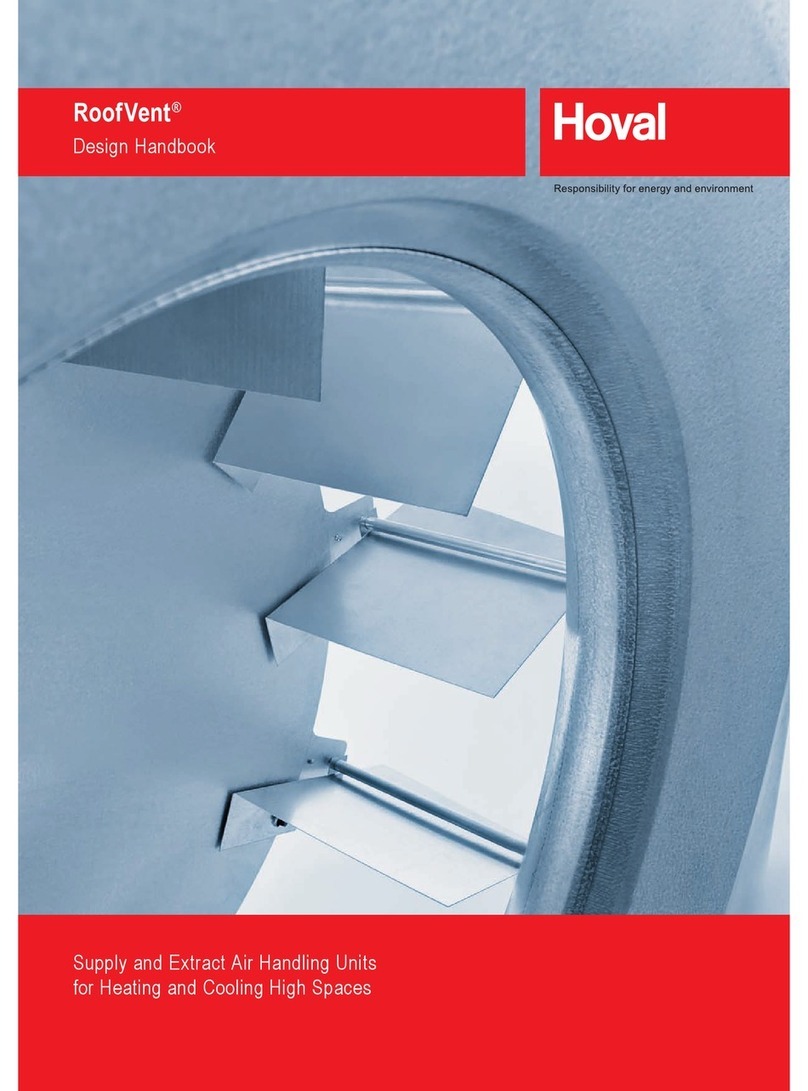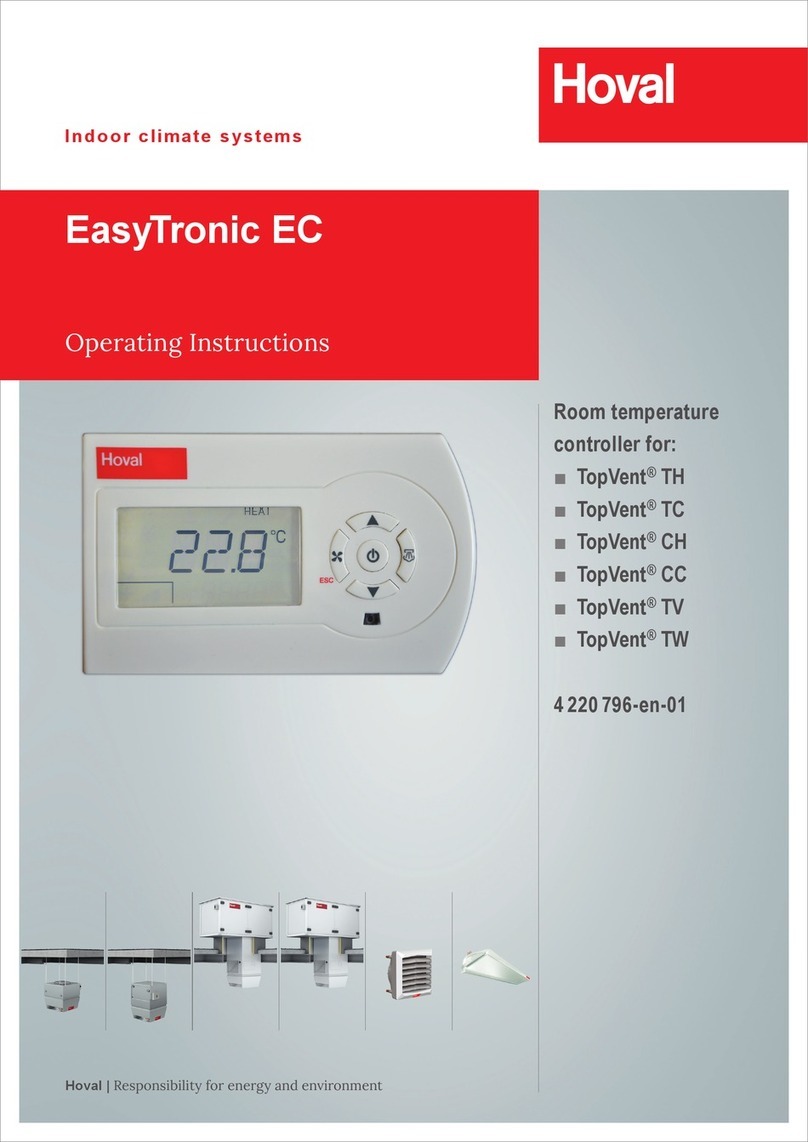
Code Operating mode Description
REC Recirculation
On/Off recirculation operation with TempTronic algorithm: During heat
or cool demand, the unit draws in room air, heats or cools it and blows it
back into the room. The room temperature set value day is active. The
ow rate is controlled in 2 stages.
Supply air fan................... 0 / Speed 1 / Speed 2 *)
Exhaust air fan................. off
Energy recovery............... 0 %
Extract air damper............ closed
Recirculation damper ....... open
Heating/cooling ................ on *)
*) Depending on heat or cool demand
EA Exhaust air
The unit extracts spent room air. There is no room temperature control.
Unltered fresh air enters the room through open windows and doors or
another system provides air supply.
Supply air fan................... Off
Exhaust air fan................. on *)
Energy recovery............... 0 %
Extract air damper............ open
Recirculation damper ....... closed
Heating/cooling ................ off
*) Adjustable ow rate
SA Supply air
The unit blows fresh air into the room. The room temperature set value
day is active. Depending on the temperature conditions, the system
controls the heating/cooling.
Spent room air passes through open windows and doors or another
system provides extraction.
Supply air fan................... on *)
Exhaust air fan................. off
Energy recovery............... 0 % **)
Extract air damper............ open
Recirculation damper ....... closed
Heating/cooling ................ 0-100 %
*) Adjustable ow rate
**) Fresh air and bypass dampers are open
ST Standby
The unit is normally switched off.
The following functions remain active:
CPR
■ Cooling protection:
If the room temperature drops below the set value for cooling protec-
tion, the unit heats up the room in recirculation operation.
Supply air fan................... MAX
Exhaust air fan................. off
Energy recovery............... 0 %
Extract air damper............ closed
Recirculation damper ....... open
Heating/cooling ................ on
OPR
■ Overheating protection:
If the room temperature rises above the set value for overheating
protection, the unit cools down the room in recirculation operation. If
the temperatures also permit fresh air cooling, the units automatically
switches to night cooling (NCS) to save energy.
NCS
■ Night cooling:
If the room temperature exceeds the set value for night cooling and
the current fresh air temperature permits it, the unit blows cool fresh air
into the room and extracts warmer room air.
Supply air fan................... on *)
Exhaust air fan................. on *)
Energy recovery............... 0 %
Extract air damper............ open
Recirculation damper ....... closed
Heating/cooling ................ off
*) Adjustable ow rate
L_OFF Off (local operating mode)
The unit is switched off. Frost protection remains active.
Supply air fan................... Off
Exhaust air fan................. off
Energy recovery............... 0 %
Extract air damper............ closed
Recirculation damper ....... open
Heating/cooling ................ off
– Forced heating
The unit draws in room air, warms it and blows it back into the room.
Forced heating is activated by inserting a wire jumper in the control
block. For example, it is suitable for heating the hall before taking the
control system into operation or if the controller fails during the heating
period. Connecting a room thermostat makes it possible to specify a room
temperature set value.
Supply air fan................... MAX
Exhaust air fan................. off
Energy recovery............... 0 %
Extract air damper............ closed
Recirculation damper ....... open
Heating ............................ on
Table 1: Operating modes of the RoofVent®units
RoofVent®RH |RC |RHC |R
Construction and operation
Art.No. 4 214 745-en-04 / Page 9






























